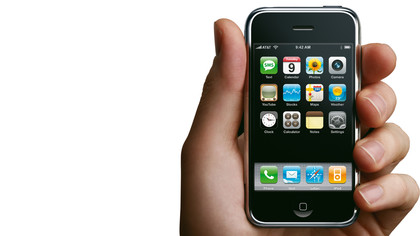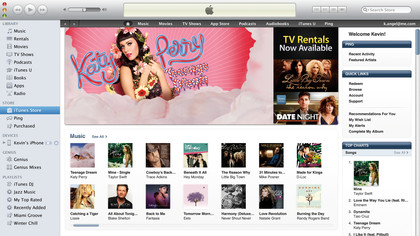10 ways Apple changed the world

Steve Jobs believed in a simple fact: everything around you "was made up by people that were no smarter than you. And you can change it. You can influence it. You can build your own things that people can use."
Jobs definitely practised what he preached. While all the other technology firms were churning out products with all the wow factor of a tumble dryer, Apple set out to change the world with innovative computers and gadgets, again and again and again.
As we'll discover, Apple products have revolutionised the way we work and play and listen to music. It has transformed entire industries, created new kinds of computing and done some truly frightening things to bridges. Read on and be inspired.
1. The Apple-1
"No more switches, no more lights"

It didn't sell a massive number of units, but 1976's Apple-1 was the first modern personal computer as most of us would understand the term. Before the Apple-1 came along, computers were sold in kit form, not as assembled machines, and they used switches and lights instead of keyboards and monitors for their input and output. You still had to bring some of your own bits, such as a power supply, keyboard and display, but as Apple promised, "initial setup is essentially 'hassle-free' and you can be running within minutes." The Apple-1 was expandable - for example, it could be connected to "almost any audio-grade cassette recorder" - and came with a free tape copy of the Apple Basic programming language.
The Apple-1 initially cost $666.66 "including 4K bytes RAM!", but rarity has pushed the price up a bit since the 1970s: in 2012, Sotheby's sold one for $374,500.
2. iMac
"Chic, not geek"

The original iMac was significant for three main reasons. It was the first legacy-free PC, with Steve Jobs killing off the floppy disk - to howls of protest - and betting on USB connections instead of expansion cards. It was designed as an internet-focused computer, with Apple describing it as "the ultimate internet appliance" and "the first computer to bring the ease of use long associated with Macintosh computers to the arcane world of the internet". And it looked completely different to any other PC on the market, its bright, translucent plastics and swooping curves, ahem, 'inspiring' not just other computer manufacturers, but makers of grilling machines, games consoles, steam irons and many other consumer products. The 2007-2012 iMac's fusion of aluminium and glass was also widely imitated, and the thinner, even more desirable new iMac should keep the plagiarists busy for a while.
Sign up for breaking news, reviews, opinion, top tech deals, and more.
3. iPhone
"An iPod, a phone, an internet mobile communicator"

When Steve Jobs introduced the iPhone in 2007, it was so different from other devices that he had to explain what it was. "An iPod. A phone. An internet communicator. This is one device, and we are calling it iPhone."
It turned out to be very popular and hugely influential: before the iPhone, smartphones either looked like BlackBerries or were weird things from Nokia. After the iPhone, they looked and worked like iPhones.
The iPhone transformed the industry too, with BlackBerry and Nokia left behind and Microsoft binning its mobile platform altogether.
It changed the way we go online and it's transformed Apple, too – thanks to its worldwide sales Apple is now the world's richest technology company.
4. iPod + iTunes
"1,000 songs in your pocket"

The iPod made digital music mainstream. The original 2001 iPod didn't have the impressive tech specs of the Creative Nomad MP3 player – but the Creative Nomad didn't have the iPod's stunning good looks and ease of use, and neither did any other MP3 player. They didn't have Apple's clever marketing either.
iTunes made it easy to transfer music you'd ripped or downloaded to your iPod, but there was a piece of the jigsaw missing. That piece turned up in iTunes 4 in the form of the iTunes Store. iTunes made it easy to get music, and effectively locked you to the iPod – copy protection meant you couldn't take your music with you to rival devices. That protection is gone, but the business model with Apple providing the player, the software and the shop – continues to work well for the company in music, movies and apps.

Contributor
Writer, broadcaster, musician and kitchen gadget obsessive Carrie Marshall has been writing about tech since 1998, contributing sage advice and odd opinions to all kinds of magazines and websites as well as writing more than twenty books. Her latest, a love letter to music titled Small Town Joy, is on sale now. She is the singer in spectacularly obscure Glaswegian rock band Unquiet Mind.